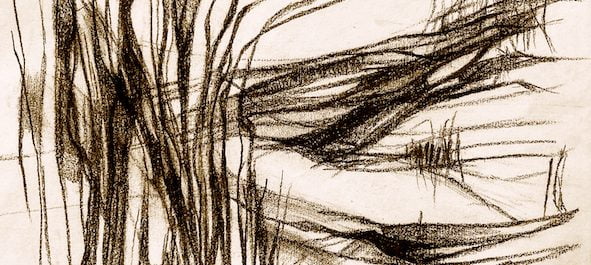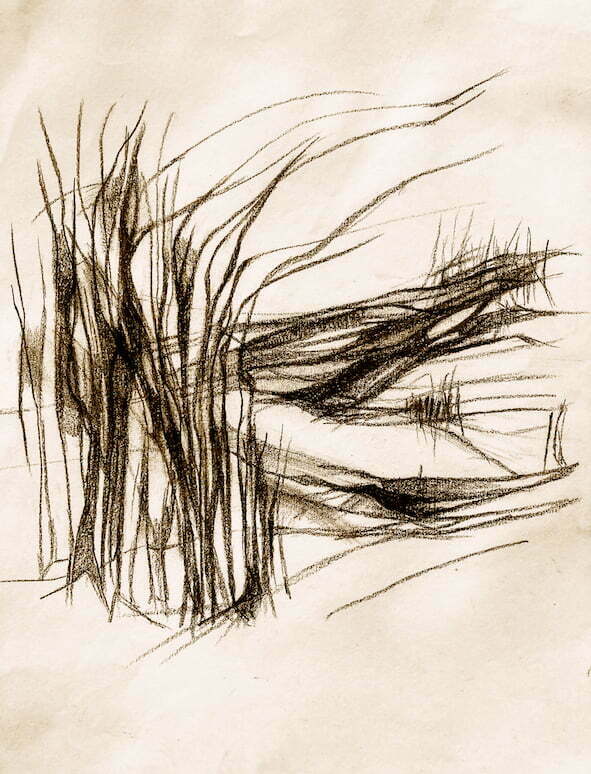Sand, Silt, Flint: Walk Six: Forvie National Nature Reserve
Sand, Silt, Flint is a studio album and song cycle project by Aberdeenshire electronic music composer, sound artist and avant-folk experimentalist Fiona Soe Paing.
From the bleak expanses of The Lecht in the Cairngorms, to the dramatic Banffshire coast, the songs combine Fiona’s original electronica arrangements and mesmerising vocals with re-imaginings of traditional ballads, archive material, field recordings and traditional instrumentation, enveloping the listener in an immersive and unsettling re-imagining of ancient stories.
Each song isalso presented via a series of outdoor geo-located sound walks in the Echoes mobile app; using smart-phones and headphones, the audio is triggered by GPS, enabling audiences to experience the music in the environments which provided it’s inspiration.
Each walk is accompanied by text detailing the local folklore that inspired it and practical information on how to get to each location.
Walk Six: Forvie National Nature Reserve – local legend
Let nought be funde in Forvie’s glebe but thistle, bent and sand.
Forive boasts some of Britain’s largest sand dunes and although a wild, uninhabited landscape today, it was once home to one of a series of small settlements that grew along Scotland’s north east coast supported by fishing and farming. The community laid roots down around a small stream that cuts through the centre of the reserve and meets the sea at Rockend. Over the course of time the dunes at Forive have stabilized as grass and heather took root, but centuries ago the sands shifted with wind and tide.
Finally beaten by advancing dunes, the settlement was abandoned in the early 1400s. The only building to survive is the village church whose ruins date back to the 12th century and stand on the site of an earlier 8th century chapel. Little is known about the settlement and how long it took to surrender to restless sands, but local legend tells of a swift demise.
Two versions of the curse that called forth the mighty storm that engulfed the village exist. The first spins a sinister tale of a demon priest responsible for the disappearance of young girls. Once the villagers discovered his dark ways he summoned a storm to destroy the settlement and enable his escape, leaving nothing but the top of the church remaining. The other claims three sisters raised the storm in a curse on the village after being driven out to sea in a leaky boat in an attempt to deny them their inheritance after the death of their father the Laird. Their storm raged for nine days and nights and buried everything in sight in sand.
Legend aside, what is known is the meteorological records from August 1413 which detail extreme tides and high winds that blew sand from the surrounding beach into a huge dune possibility fulfilling the sisters’ curse, “let nought be funde in Forvie’s glebe but thistle, bent and sand.”
Forive National Nature Reserve Walk
The walk begins at the Forive National Nature Reserve Visitor Centre and is one of a series of trails mapped out across the reserve. This walk leads from the gate at the visitor centre and follows the Heath Trail which is illustrated by waymarkers showing a white four-leaf clover set against a red background. This circular trail leads from the visitor centre and loops through heathland and dunes in the north of the reserve. There are two options. One leads a 1.4 mile loop into the reserve and skirts along the end of the Sand Loch. The other follows a 2.1 mile loop deeper into the landscape and sea cliffs. The longer option rewards with wide sea views with Aberdeen to the south, Collieston to the north and off shore wind turbines to the east.
Before setting out take a moment to run your fingers through the Living Wall, a vertical garden beside the entrance to the visitor centre filled with pollinator-friendly plants and flowers perfect for the surrounding landscape. Once the sounds and views of the visitor centre have faded, the slow, sandy landscape becomes disorientating. It’s easy to lose a sense of time and direction and the sound and smell of the sea to the east is the easiest way to orientate yourself. Look up for low flying sea birds and wide open skies. And look out for heather, crowberry, lichen, staghorn clubmoss and low cut willow trees, as well as wild flowers during late spring and early summer.
The path includes sections of gravel, sand and grass, with parts closer to the visitor centre better for buggies and walking sticks. Some later sections cover uneven ground and undulate across the landscape in places. Smaller sand tracks crisscross into and across the dunes for the more adventurous to explore. Wet weather turns the trail muddy in places and sections of the longer walk can become flooded. But on these days you can also breath deep the pungent smell of earth and sand. Ice on the paths can be a hazard in chilly deep winter. On windy days a keen breeze cuts across the dunes from the North Sea, spinning through the blades of a small wind turbine adjacent to the visitor centre. On these days it’s easy imagine the wild storm that smothered the village that once settled here, its church, lives and livelihoods, with unstoppable sand.
Practical Information
Getting There
Forive National Nature Reserve is approximately 16 miles north of Aberdeen. If you are driving, take the A90 north out of Aberdeen and then turn onto the A975 to Cruden Bay. The visitor centre car park is about three miles north of Newburgh. Once past Newburgh turn right at the Collieston crossroads from here the visitor centre is signposted. If you are taking public transport, Stagecoach operate buses between Aberdeen and Peterhead which stop at both Newburgh and the Collieston crossroads. It’s a 20 minute walk to the visitor centre from the crossroads.
Visitor Centre
Forive Visitor Centre is open daily from April to September and is full of information about the nature reserve including tactile exhibits.
Toilets & Refreshments
Accessible toilets are located inside the visitor centre, other public use toilets can be found at Collieston harbour to the north, or in Newburgh at the Newburgh Inn. Wheelchair accessible picnic tables are located in the grounds around the visitor centre and overlooking the Sand Loch. The nearest place for eat in food is the Newburgh Inn.
Accessibility
The visitor centre and surrounding area are wheelchair accessible.
Wildlife Warning
Do not disturb breeding or roosting birds or the seals who haul out on the shore along this coast. Dogs must be kept on leads during nesting season (April to July).
Alternative Walk
If you would like to visit the ruins of Forive Kirk and the site of the old village, there is an alternative circular walk through the south half of the reserve. This walk is the Dune Trail and starts at the Waterside car park – a right hand turn off the A975 after it crosses the Ythan River estuary north of Newburgh. There are no facilities at this car park and the 3.5 mile trail is plotted out by waymarkers showing a white sand dune against a blue background. The rough path slopes up and down and is made up of mostly sand and grass with one water crossing. Those who don’t want to complete the full circle can head back to the car park the way you came after visiting the ruined Kirk. Wildlife warnings also apply.

Each walk is written and researched by Lesley Anne Rose.
You purchase Sand, Silt, Flint via Fiona’s Band Camp site.
Image credit: Fi Thomson
Walk Disclaimer
We are not responsible for the maintenance of the pathways and tracks described in each walk. The responsibility lies with the landowner or public body that manages the land. Walks have been researched and written based on the conditions of the track or pathway when we undertook each one. We strongly recommend wearing appropriate walking shoes or boots and outdoor clothing for each walk.
Dogs should be kept on a lead during lambing season (April to July) and be careful to check for ticks when returning from walks between March and October which can cause Lyme Disease. For more information, see: https://forestryandland.gov.scot/visit/activities/walking/check-for-ticks


